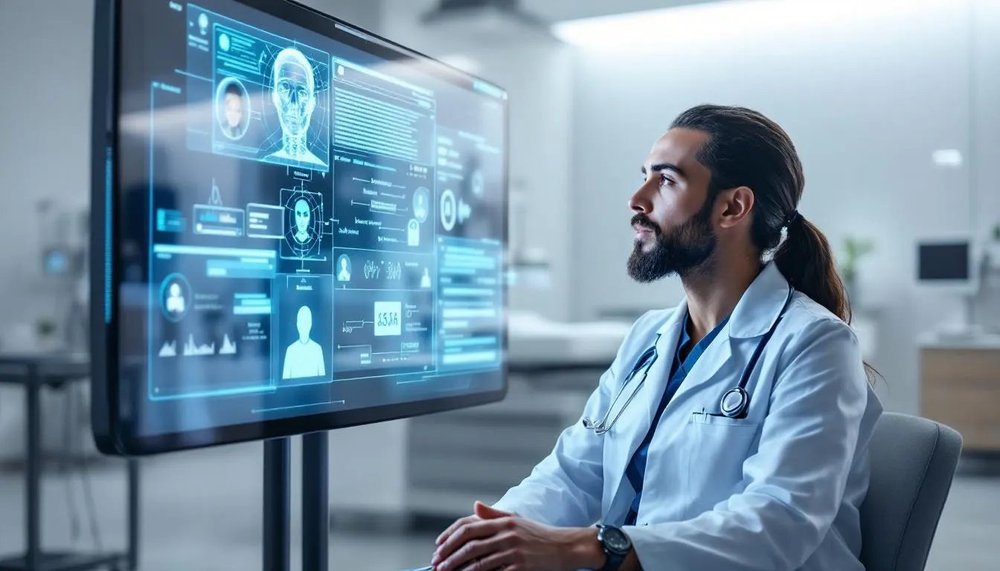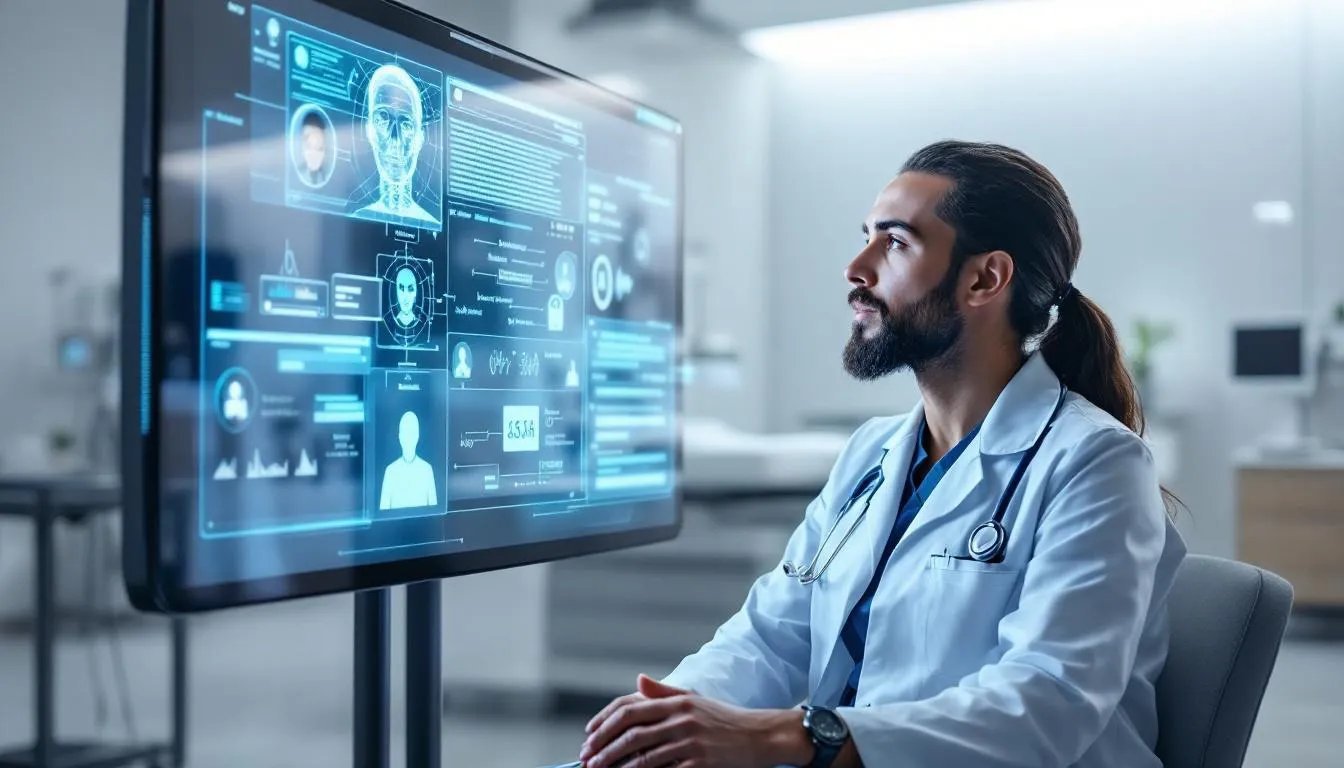The healthcare industry is on the brink of a video technology revolution that will transform how patients receive care, medical professionals train, and healthcare organizations engage with their audiences. By 2026, healthcare video trends will go beyond simple telemedicine calls, integrating artificial intelligence, extended reality, and advanced analytics to deliver personalized, accessible content that enhances patient engagement and medical communication.

Examples of Leading Healthcare Video Productions
BrainRobotics
- Purpose & Context:
- Blends live action and interview footage to showcase its AI-driven prosthetic technology and human-centered mission.
- Highlights how the company’s prosthetic hands merge advanced robotics with empathy-driven design—empowering users to regain independence and redefining what’s possible in assistive healthcare tech.
- Why It Works:
- Combines innovation with human impact by focusing on real users and engineers rather than just features.
- Transforms complex prosthetic technology into a story about connection, accessibility, and empowerment.
- Uses authentic interviews and cinematic visuals to ground the tech in emotion, bridging AI innovation and human experience.
Qventus
- Purpose & Context:
- Highlights how its AI-driven operations platform helps hospitals and healthcare systems improve efficiency, reduce wait times, and enhance patient flow.
- Communicates the brand’s mission to bring automation and intelligence to complex clinical and administrative workflows—supporting a smoother, safer care experience.
- Why It Works:
- Embodies the rise of AI-enabled operational intelligence.
- Blends live-action hospital visuals with clean motion graphics to make invisible data systems tangible and actionable.
- Balances technical sophistication with empathy, reflecting improvements in both process and patient experience.
- Positions Qventus as a leader in intelligent healthcare transformation.
NTI
- Purpose & Context:
- Demonstrates medical device safety in robotic-assisted surgical procedures, emphasizing precision, reliability, and compliance with healthcare safety standards.
- Aims to train medical professionals and showcase how NTI’s technology supports safer, more controlled surgical environments.
- Why It Works:
- Uses real procedural demonstrations to build trust and transparency.
- Live-action format reinforces authenticity and regulatory credibility by showing the device in realistic clinical settings.
- Focuses on safety protocols, human-technology collaboration, and surgical precision.
- Effectively communicates how robotics innovation transforms operating rooms while maintaining patient safety.
OnPoint Healthcare Partners
- Purpose & Context:
- Introduces its virtual assistant technology through a 2D animated explainer video, designed to streamline patient communication and administrative workflows.
- Explains how automation supports scheduling, triage, and follow-ups—helping clinics enhance efficiency and patient satisfaction.
- Why It Works:
- Reflects the trend of AI-driven patient engagement.
- Uses clean 2D animation and focused storytelling to make complex digital systems approachable for providers and patients.
- Combines empathy-driven messaging with visual clarity.
- Demonstrates how healthcare technology can simplify care delivery while improving the patient experience.
Atlanta Cancer Care
- Purpose & Context:
- Shares real stories from doctors and patients, emphasizing the clinic’s expertise in oncology and compassionate, personalized care.
- Aims to humanize the brand, foster trust, and communicate how the organization combines cutting-edge treatment with empathy-driven patient relationships.
- Why It Works:
- Embodies authentic storytelling through patient voices.
- Prioritizes real experiences over scripted messaging to build emotional credibility.
- Uses cinematic production, genuine interviews, and a warm tone to make cancer care feel personal and hopeful.
- Shows how live testimonials bridge trust between innovation, care teams, and patients.
Explore more healthcare video examples in the Levitate portfolio.
AI-Powered Hyper-Personalization and Automation: Tips and Trends for Healthcare Video in 2026

Levitate brings you key insights into the evolving landscape of healthcare video production to help your organization stay ahead in 2026. Leveraging artificial intelligence to create highly personalized patient experiences is no longer optional—it’s essential. By integrating AI-driven tools, healthcare video creators can analyze patient data such as medical histories and behavioral patterns to deliver tailored video content that truly connects with diverse audiences, such as with this animated explainer case study.
Intelligent Content Curation for Effective Patient Education
To enhance the impact of healthcare videos, collaborate with clinical teams to develop AI-powered content curation systems that:
- Select and sequence videos based on patient learning styles, cultural backgrounds, and literacy levels.
- Schedule video delivery at optimal times to increase engagement and educational effectiveness.
- Utilize recommendation engines that adapt through patient interactions to keep content relevant and personalized.
Embracing Extended Reality (XR) to Revolutionize Healthcare Video

Extended Reality—including Virtual, Augmented, and Mixed Reality—is transforming how healthcare providers engage patients and train staff. Video producers should consider:
- Developing VR therapy videos targeting conditions such as anxiety, PTSD, and phobias, requiring immersive and realistic environments.
- Creating AR overlays for virtual consultations that display real-time patient data, blending live footage with informative graphics.
- Designing Mixed Reality 3D models to help patients visualize anatomy and procedures, enhancing comprehension and comfort.
- Producing VR hospital tours that familiarize patients with facilities, reducing pre-treatment anxiety and improving overall experience.
XR-Enhanced Medical Training Videos
XR-powered training offers immersive, risk-free learning. Focus on:
- VR surgical simulations with realistic haptic feedback replicating operating room conditions.
- Interactive patient scenario videos preparing staff for complex cases.
- Virtual anatomy lessons tailored to diverse learning preferences for improved knowledge retention.
Voice-Activated and Conversational Videos: Increasing Accessibility

Incorporate voice control and conversational interfaces into healthcare videos to improve accessibility, especially for patients with mobility or visual impairments. Production teams should:
- Enable hands-free navigation and interactive Q&A features within videos.
- Support multiple languages to serve diverse patient populations.
- Integrate with smart home devices for seamless health monitoring and appointment management.
Advanced healthcare-specific voice recognition technology is crucial to accurately interpret medical terminology and operate effectively in noisy settings.
Real-Time Predictive Content Delivery: Optimizing Video Impact
Collaborate with healthcare professionals to create video content powered by predictive analytics for proactive care:
- Develop preventive educational videos targeted at at-risk patients.
- Craft personalized video reminders triggered by wearable health data.
- Optimize video delivery timing based on patient behavior patterns.
- Produce mental health support videos timed for moments of emotional distress or life changes.
- Tailor chronic disease management education anticipating disease progression.
Prioritizing Security and Privacy in Healthcare Video Production

Security and privacy are paramount. Ensure your video projects include:
- Blockchain technology for securing video consultations and medical records.
- End-to-end encryption integrated into video platforms.
- Biometric authentication methods such as fingerprint and facial recognition.
- Zero-trust security models with continuous verification and network segmentation.
Plan for infrastructure upgrades and compliance with evolving privacy regulations, including oversight of AI-generated content.
Next-Generation Live Streaming and Interactive Video Experiences
Prepare for advanced live streaming capabilities by:
- Producing ultra-high-definition live surgical broadcasts for medical education.
- Designing interactive group therapy and support session videos with real-time chat and breakout rooms.
- Incorporating live polls and Q&A features to boost engagement during webinars.
- Facilitating collaborative diagnosis sessions connecting specialists globally.
Ensure your infrastructure supports enterprise-grade internet with high upload speeds and hardware capable of 4K/8K streaming.
Supporting Global Medical Collaboration through Video
Healthcare video production can enable:
- Routine international consultations improving specialist access.
- Remote surgical assistance combining local teams with expert AR guidance.
- Cross-cultural medical education programs adapted to local audiences.
Integrating Wearable and IoT Data into Healthcare Video Content

Effective video content will increasingly connect with wearable and IoT devices by:
- Automatically triggering videos based on real-time vital signs and activity data.
- Producing medication education linked to connected pill dispensers.
- Scheduling proactive video consultations informed by smart home health monitors.
Collaboration with healthcare IT teams to ensure standardized APIs and interoperability is essential.
Leveraging Advanced Analytics and Biometric Feedback
Utilize healthcare video analytics to enhance content effectiveness:
- Eye-tracking to assess patient attention and comprehension.
- Facial emotion recognition to detect anxiety and adapt delivery.
- Heart rate monitoring during consultations for personalized communication.
- Brain-computer interfaces to tailor learning according to cognitive load.
Strict privacy protocols and federated learning approaches must protect sensitive biometric data.
Measuring ROI and Effectiveness of Healthcare Video Projects
Use analytics to:
- Correlate video engagement with patient outcomes and treatment adherence.
- Apply predictive models to guide video content investments.
- Conduct cost-benefit analyses demonstrating financial returns from video initiatives.
Preparing for Regulatory Changes in Healthcare Video Production

Stay ahead of regulations including:
- FDA guidelines for AI-generated medical video content.
- Expanded telemedicine licensing and credentialing.
- International data protection and quality assurance standards.
- Enhanced cybersecurity requirements for healthcare video platforms.
Early compliance planning ensures smooth adoption and minimizes legal risks.
Frequently Asked Questions (FAQs) About Healthcare Video Trends 2026
What are the key healthcare video trends to watch in 2026?
In 2026, expect to see advancements such as AI-powered hyper-personalization, extended reality (XR) applications, voice-activated videos, real-time predictive content delivery, and next-generation live streaming shaping healthcare video production and communication.
How can healthcare video production improve patient education?
Healthcare video production delivers engaging educational content that simplifies complex medical information, making it easier for patients to understand treatment options, healthcare information, and procedures. AI-driven content curation further personalizes the learning experience based on patient needs.
Why is security and privacy important in healthcare video marketing?
Because healthcare videos often involve sensitive medical information and patient data, maintaining strict security and privacy protocols—such as encryption and biometric authentication—is essential to protect patient confidentiality and comply with regulations.
How can live streaming enhance healthcare communication?
Live streaming enables real-time interaction between healthcare providers and patients, offering opportunities for immediate education, support groups, webinars, and collaborative medical consultations, thereby improving patient engagement and trust.
What role does AI play in healthcare video trends?
AI enhances healthcare video marketing by enabling personalized video content, automating production tasks, optimizing video delivery timing, and providing advanced analytics to measure content effectiveness and patient engagement.
Levitate is your partner in navigating these healthcare video trends and producing innovative, high-quality video solutions that resonate with patients and elevate your organization’s impact. Contact us today to discover how we can help you lead the future of healthcare video in 2026 and beyond.









